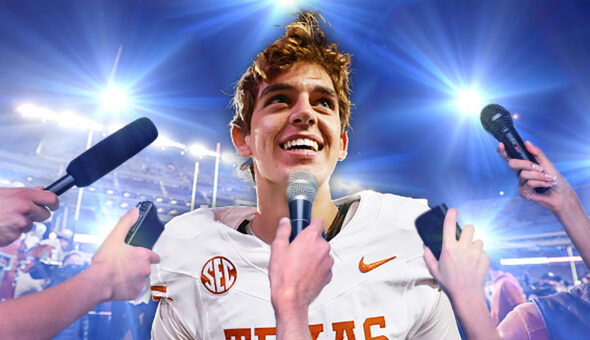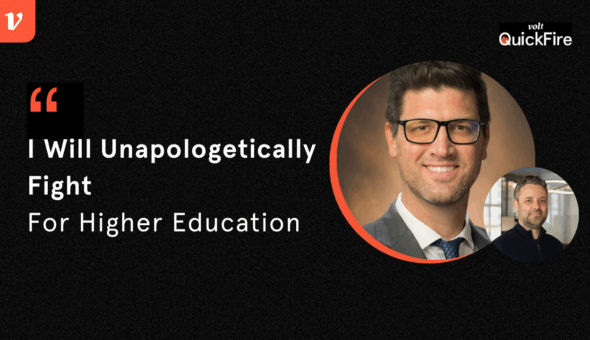As Generation Alpha become high school sophomores and begin to enter the higher education marketing funnel, colleges and universities are learning that this new cohort brings different expectations, preferences, and priorities than their predecessors. To capture their attention, higher education institutions must rethink traditional marketing strategies, adapting to the distinct characteristics of this digitally savvy and socially conscious generation.
Gen Alpha is growing up surrounded by more college-educated adults than any before it and represents the most racially diverse population in U.S. history. As a result, these students are poised to extend their academic careers and earn degrees in even higher numbers. However, their approach to choosing a college is less traditional, driven more by social influences and digital platforms than by the priorities that guided previous generations.
A Digital-First Generation with High Expectations
As the first generation to grow up entirely immersed in the digital world, Gen Alpha’s relationship with technology is central to their college search process. Dr. Carrie Phillips, chief communications and marketing officer at the University of Arkansas at Little Rock and regular Volt contributor, noted that the generation is “very much digital-first,” preferring to gather information and handle most tasks online while relying heavily on digital communities and peer networks for guidance.
Their early exposure to technology, combined with the effects of the COVID-19 pandemic, has shaped their expectations. Phillips highlighted how this generation’s childhood, marked by remote learning and digital interactions, differs from previous generations. As a result, these students are more comfortable with video communication and online learning, which influences how they approach the college search.
Dr. Sosa Pieroni, executive vice president for enrollment, marketing and student success at Georgia Southern University, also highlighted the need for colleges to maintain an authentic voice across multiple digital platforms.
“Gen Alpha expects an environment of transparency and openness,” she said. “They’ll dismiss institutions that don’t reflect their values.”
This underscores the importance of colleges not just adopting the latest social media trends but also staying attuned to conversations happening within these platforms to align messaging accordingly.
The Shift Toward Experience and Visibility
Generation Alpha’s priorities reflect a shift toward valuing the college experience over traditional metrics like rankings and academic reputation. Jennifer Jessie, a college admissions counselor known as Jenn the Tutor, observed that this generation is more focused on the social aspects of college life.
“Because of the rise of influencers, TikTok, et cetera, they are more focused on the college experience and amenities than they are on the educational strengths of a college,” Jessie explained.
This shift is evident in the popularity of social media trends like #rushtok, where students showcase sorority rush experiences and the emphasis on campus aesthetics. Colleges that are prominent on social media or featured in influencer content tend to attract more interest. For instance, less selective schools, such as the University of Alabama, are becoming more desirable due to their visibility online.

Heather Davis, associate director for enrollment and marketing at James Madison University, emphasized the importance of authenticity in marketing to Generation Alpha.
“Authenticity and transparency are important […] This group knows when information is disingenuous and can quickly debunk a narrative with a search of their preferred digital platforms,” Davis said. Colleges must present genuine, inclusive messaging that resonates with this generation’s values.
Navigating the Search Process with a New Mindset
Unlike previous generations who prioritized rankings, selectivity and academic fit, Gen Alpha sees college as more of a stepping stone for networking and building their personal brand.
Jessie noted, “They think of themselves as a personal brand, and their colleges need to align with the direction of that brand.”
This brand-conscious mindset drives them to seek colleges that align with their lifestyle aspirations. Although academic rigor still matters, Generation Alpha views college as a reward rather than a place to continue the grind.
“They know they need to take rigorous classes and face burnout head-on, but they don’t want their college experience to be defined by that,” Jessie said.
They are drawn to schools that offer a balance of academics and social life, with a strong focus on experiences that allow them to connect and grow their networks.
Trust, Peer Influence and the Power of Social Media
Another key characteristic of Generation Alpha is their deep skepticism of traditional authority figures. Jessie pointed out that this generation, like Gen Z before them, is wary of adults and traditional sources of information.
“If an admissions officer, enrollment professional, college consultant or parent tells them something, they’re going to ask their friends and others who have gone through the process if they think that’s good advice,” she explained.
Peer influence often outweighs the advice of experts, with more than half of Gen Alphas “using the internet to learn about what’s cool and trendy,” according to EMARKETER.
Phillips and Davis also emphasized the importance of understanding where and how this generation searches for information. Being present on the platforms they use and providing content that resonates with their search habits is crucial. Phillips predicts that AI-driven search tools will become a primary resource for Generation Alpha when researching colleges, further shifting the landscape away from traditional materials like viewbooks and brochures.
The impact of social media on Generation Alpha’s college perceptions cannot be overstated. Jessie highlighted the influence of unboxing videos, influencer content and even reality TV stars’ college experiences in driving interest.
“Students from this younger generation tend to be influenced the most by where people in their community decide to attend college,” said Jessie.
Colleges that provide engaging admitted student swag or have a strong presence on platforms like TikTok perform better in attracting this generation. Institutions that can effectively engage local communities and maintain a strong digital presence are more likely to appeal to Generation Alpha.

Challenges and Opportunities for Higher Ed Marketers
Reaching Gen Alpha requires a nuanced approach that balances authenticity, personalization and digital savvy. Phillips acknowledged that the rapidly shifting landscape of higher education marketing can be challenging.
“You have to be willing to get up to speed… if you’re willing to do that, then I think our profession will be up to the challenge,” she said.
Davis added that staying current with emerging platforms and continuously adapting marketing strategies is key.
“Keeping up with the latest platforms and providing a variety of authentic experiences keeps marketers on their toes and is necessary in helping a prospective student find a perfect match for their future home in higher ed,” she explained.









